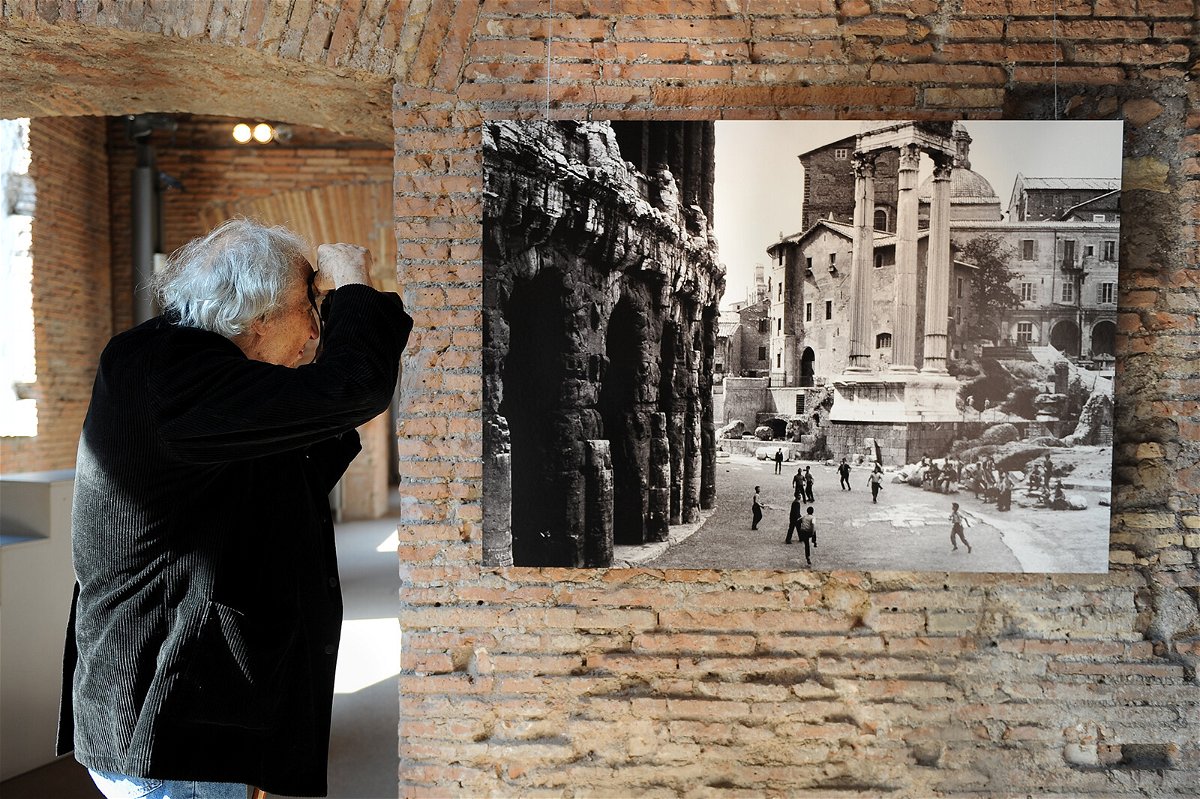William Klein, photographer who brought high fashion into the streets, has died aged 96

US photographer William Klein takes pictures during an exposition named "William Klein Rome photos - 1956/1960 "
Justin Kamp
The photographer, filmmaker and multi-disciplinary artist William Klein has died aged 96, according to the International Center of Photography, where a retrospective of his work is currently on show. In a statement, the ICP said he passed away on Saturday in Paris. No cause of death was given.
Klein was best known for his photography, which encompassed and intertwined a wide array of subjects including candid street photography, kinetic fashion shoots and high-contrast abstract work. He also maintained robust filmmaking and painting practices.
Klein was born in New York City in 1926, and lived there until the age of 20, when he was sent to Europe by the US Army to help with reconstruction efforts following World War II. He obtained his first camera –which he won in a card game –during this trip, and eventually settled in Paris, where he studied painting and sculpture at the Sorbonne and worked in the studio of the renowned Modernist painter Fernand Léger.
It was in Europe that Klein began to seriously pursue his great love, photography, and he soon started transposing the abstract forms of his paintings and sculptural studies to shadowy, geometric photographs of objects in motion, as seen in compositions such as 1952’s “Moving Diamonds, Mural Project, Paris” or “Turning Black Egg.”
“The photography was a way out of the ABCs of abstract painting from that period in Paris,” Klein told Interview magazine in 2013. “I discovered that I could do whatever I wanted with a negative in a darkroom and an enlarger.”
Klein’s experimentation soon won him a fan back in his hometown: Alexander Lieberman, an art director at Vogue, who helped bring Klein’s kineticism to the glossy realm of high fashion. Klein found inspiration in the brash, busy chaos of the New York streets where he spent his youth, and would spend days wandering the city, taking photographs of strangers and talking with them about their lives, as immortalized in his iconic 1956 photobook “Life is Good & Good for You in New York: Trance Witness Revels.”
He soon began to shoot his editorials on the street, too, placing models amid crowds and taxicabs and photographing them in striking, quasi-surreal scenes of clutter and poise. In an age still dominated by the stylized studio shoots of photographers like Irving Penn and Richard Avedon, Klein’s decision to bring fashion photography down to the bustling friction of the street was considered revolutionary.
“The first thing that people photograph or digest in New York is Broadway and Times Square — it’s the most beautiful thing in New York, and in America,” Klein said of the film in an interview with Aperture. “But what is it, what are people actually seeing? They are seeing the spectacle of advertising; it’s buy this, buy that. It’s beautiful, but it’s made up of sales pitches, and people are fascinated and seduced by advertising.”
His desire to capture life as it really occurred would persist throughout his films as they grew to encompass subjects such as the Black Panther activist Eldridge Cleaver’s flight from America and the 1981 French Open tennis tournament.
Klein’s wide-ranging talents won him acclaim in the worlds of fashion, film and fine art, and he received numerous honors including the Medal of the Century from the Royal Photographic Society in London in 1999 and the International Center of Photography’s Infinity Award for Lifetime Achievement in 2007, as well as countless museum exhibitions and acquisitions. (A major exhibition of his a at the International Center of Photography that was scheduled to close on Monday has been extended until Thursday.)
Despite his accomplishments across so many media, Klein always returned to photography and remained an active photographer well into his later years.
“I have a special relationship with God,” Klein told Interview of his approach to his favored discipline. “And when I take the right photograph, God gives me a little bing! in the camera. And then I know I’m on the right track.”
The-CNN-Wire
™ & © 2022 Cable News Network, Inc., a Warner Bros. Discovery Company. All rights reserved.